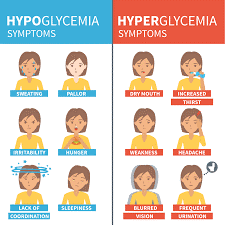A nurse is giving an intramuscular injection to a newborn who was delivered at 38 weeks of gestation. Which of the following pain scales should the nurse use to assess the newborn's pain?
Natal Infant Pa Scale PS
FACES pain rating scale
Premature infant Pain Profile (PIPP)
visual analog scale (VAS)
The Correct Answer is A
Choice A reason:
A. Natal Infant Pain Scale (NIPS): The NIPS is a behavioral assessment tool designed for both preterm and full-term neonates. It evaluates six behavioral indicators in response to painful procedures. These indicators include changes in facial expression (such as grimacing, brow bulge, and eye squeeze), body movements (such as fisting, tremulousness, and limb withdrawal), and other signs of distressChoice B reason:
FACES pain rating scale The FACES pain rating scale should not be used because it is a visual scale that uses facial expressions to assess pain in children who can communicate using pictures of faces displaying different emotions. It is generally used for older children and not appropriate for newborns.
Choice C reason
Premature Infant Pain Profile (PIPP): The PIPP is another pain assessment tool specifically developed for preterm infants. It considers physiological and behavioral parameters, including facial expressions, heart rate, oxygen saturation, and gestational age. While useful for preterm infants, it may not be the best choice for full-term newborns.Since the newborn in this scenario was delivered at 38 weeks of gestation, the PIPP would be an appropriate pain assessment tool to use. It considers specific physiological and behavioural indicators of pain in newborns and helps healthcare providers evaluate and manage pain in this vulnerable population.
Choice D reason:
Visual analog scale (VAS) should not be used because the visual analog scale is a pain assessment tool typically used for older children, adolescents, and adults who can understand and provide a subjective rating of their pain intensity along a linear scale. It involves marking a point on the line corresponding to the level of pain experienced. Since newborns cannot communicate in this way, the VAS is not suitable for their pain assessment.

Nursing Test Bank
Naxlex Comprehensive Predictor Exams
Related Questions
Correct Answer is A
Explanation
A. This choice is correct because a child who has autism spectrum disorder often exhibits strict adherence to routines and rituals, and may become distressed or agitated when there are changes or disruptions to their usual patterns.
B. This choice is incorrect because difficulty paying attention to tasks is not a specific manifestation of autism spectrum disorder, but rather a common symptom of attention-deficit/hyperactivity disorder (ADHD). A child who has autism spectrum disorder may have difficulty focusing on tasks that are not of interest to them, but may also show intense concentration on tasks that are of interest to them.
C. This choice is incorrect because disobedience to authority figures is not a specific manifestation of autism spectrum disorder, but rather a common behavior problem in children and adolescents. A child who has autism spectrum disorder may have difficulty understanding social cues and expectations, but may also show compliance and cooperation when given clear instructions and positive reinforcement.
D. This choice is incorrect because excessive anxiety when separated from parents is not a specific manifestation of autism spectrum disorder, but rather a common symptom of separation anxiety disorder. A child who has autism spectrum disorder may have difficulty forming attachments and expressing emotions, but may also show affection and attachment to familiar people.
Correct Answer is A
Explanation
A. Irritability: Correct. Irritability is one of the signs of hypoglycemia, which occurs when blood glucose levels fall below 70 mg/dL (3.9 mmol/L). Other signs include shakiness, sweating, hunger, headache, confusion, and blurred vision.
B. Increased urination: Incorrect. Increased urination is one of the signs of hyperglycemia, which occurs when blood glucose levels rise above 180 mg/dL (10 mmol/L). Other signs include thirst, dry mouth, fatigue, nausea, and fruity breath odor.
C. Vomiting: Incorrect. Vomiting is not a specific sign of hypoglycemia or hyperglycemia, but it can occur as a complication of either condition if left untreated or poorly managed.
D.Facial flushing: Incorrect. Facial flushing is not a sign of hypoglycemia or hyperglycemia, but it can occur as a side effect of some medications used to treat diabetes, such as niacin or rosiglitazone.

Whether you are a student looking to ace your exams or a practicing nurse seeking to enhance your expertise , our nursing education contents will empower you with the confidence and competence to make a difference in the lives of patients and become a respected leader in the healthcare field.
Visit Naxlex, invest in your future and unlock endless possibilities with our unparalleled nursing education contents today
Report Wrong Answer on the Current Question
Do you disagree with the answer? If yes, what is your expected answer? Explain.
Kindly be descriptive with the issue you are facing.
